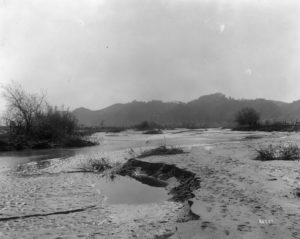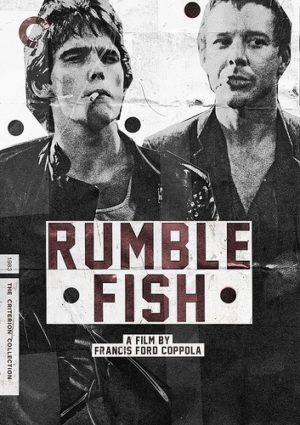
Taylor Yard Bridge—a.k.a. Rumblefish
Taylor Yard Bridge connects two areas along the Los Angeles River that historically experienced friction. In the last few decades, gangs 1 used the water-bounded section of the Elysian Valley as a battleground. As one local business owner told LA Weekly in 2014, 'Ten, 15 years ago there was a shootout every weekend. The bullets would fly right past me, right into the walls of the house.'
For those who visit today, the area is much more peaceful, drawing in diverse crowds and new businesses, and largely divorced from its violent past. While the LA River is now defining a new identity, in our planning of "Rumblefish" we knew we would be remiss not to reference the area’s history. As such, the bridge as we’ve designed it serves as both a utilitarian and symbolic gesture of unity.
Additional Credits: Mike Kelley (Photography)
The History of the LA River
Before Los Angeles was a bustling metropolis, it was a quiet region where the landscape ebbed and flowed with Mother Nature  . Floods in the area were not uncommon, however, the area’s first residents, Native Americans, moved with the water. As the city began to industrialize at the turn of the 19th century, more permanent developments—homes, industry, and railroads—were erected near the river and the same floods, once incidental, were now a real threat to both life and property.
. Floods in the area were not uncommon, however, the area’s first residents, Native Americans, moved with the water. As the city began to industrialize at the turn of the 19th century, more permanent developments—homes, industry, and railroads—were erected near the river and the same floods, once incidental, were now a real threat to both life and property.

In 1938, Los Angeles was besieged by two storm systems delivering record-breaking rainfalls  . The Los Angeles River had become completely warped, flooding roughly one-third of the city 2. This catastrophe prompted the total channelization of 51 miles of the river, turning the once wild waterway into a flood control conduit and, inadvertently, a de facto wall. This fortification would for decades impact the city both economically and culturally, reinforcing borders between communities that had already been cordoned by railroads, industry, and freeways. Any evidence of vegetation was, too, completely desecrated or packed beneath 3.5 million barrels of cement and 147 million pounds of reinforced steel.
. The Los Angeles River had become completely warped, flooding roughly one-third of the city 2. This catastrophe prompted the total channelization of 51 miles of the river, turning the once wild waterway into a flood control conduit and, inadvertently, a de facto wall. This fortification would for decades impact the city both economically and culturally, reinforcing borders between communities that had already been cordoned by railroads, industry, and freeways. Any evidence of vegetation was, too, completely desecrated or packed beneath 3.5 million barrels of cement and 147 million pounds of reinforced steel.

Gangs of Los Angeles—and Francis Ford Coppola
Taylor Yard Bridge, or "Rumblefish" as we like to call it, playfully takes its name (and its bold orange color) from the 1983 Coppola film  about rival gangs, while similarly referencing the actual gangs that once battled in the area. Our design of the bridge acknowledges this violent past—and nullifies the river’s past as a border wall—by offering a meeting point in the middle where two slightly offset cantilevered view decks look north and south, as if in a handshake or dance.
about rival gangs, while similarly referencing the actual gangs that once battled in the area. Our design of the bridge acknowledges this violent past—and nullifies the river’s past as a border wall—by offering a meeting point in the middle where two slightly offset cantilevered view decks look north and south, as if in a handshake or dance.

The view decks, aside from allowing for contemplation of the natural bend of the river's flow at this location, are designed to accommodate small gatherings, community events, and exhibits. The center of the bridge becomes a place for togetherness and community collision—of the peaceful kind.

Bridging Communities
The architecture of the bridge is uncomplicated, utilizing a perfectly level box truss from east to west. The form takes inspiration from the area’s industrial past, a modern interpretation of the railroad bridges that once crossed the river, and mid-20th century Los Angeles architecture.

The path is intentionally designed to appear to “float” within the box truss as it slopes to meet the different elevations of the banks on either side of the river. The path is metaphorically an extension of the city, with its roads, walkways, and bikeways gently suspended within the truss—the truss is there to simply hold this path in place.

The bridge employs the lightest and most efficient structural elements possible: tube steel, wide flange steel, and steel rods. HSS steel members form rectangular openings, and the bracing of the frame is achieved by the provision of tension rods spanning diagonally in vertical planes. This hybrid frame has rigid joints that are capable of transferring and resisting bending moments, and diagonals working in tension only.

The bridge also uses a redundancy system (fracture critical members) that enables the structure to carry loads in the event of a failure of one or more components. The use of this hybrid form allows the vertical planes in the bridge to remain almost unobstructed and provides for open viewing of the LA River along the bridge length.

Structural elements were componentized so that larger portions of the bridge could be assembled in an adjacent yard and construction work within the riverbed could be minimized.
Construction on Taylor Yard Bridge began in May 2019 and was completed in March 2022.

A special feeling it is to build a civically impactful project, especially when the city is your birthplace and home.| Zoltan E. Pali, FAIA | SPF:a Design Principal

Notes
-
1
The gangs along this stretch of the Los Angeles River trace their roots back as far as the 1950s, and include infamous names such as Echo Park, Diamond Street, Frogtown,Crazys , Head Hunters, and Big Top Locos.
-
2
New inlets were carved out and channels shifted by as much as a mile. In all, 115 people lost their lives and over 6,000 homes were damaged or destroyed.
Awards
- Architizer A+ Finalist, Transportation Infrastructure 2023
- Los Angeles Business Council Architectural Award, Civic 2022
- Institute for Sustainable Infrastructure - Envision Bronze Award for Sustainability 2022
- Engineering News-Record Award of Merit - Landscape/Urban Development - Southern California 2022
- World Architecture Festival Shortlist, Future Project for Infrastructure 2018
- Westside Urban Forum Award, Unbuilt Public/Open Space, Citation 2017
Publications
- SPF:a and Hood Embed an Eye-Catching Bridge in the L.A. River - Architectural Record 2022
- SPF:architects' anticipated LA River pedestrian bridge opens to the public with a unifying gesture - Archinect 2022
- orange ‘rumblefish’ bridge designed by SPF:architects opens in los angeles - designboom 2022
- SPF:architects Completes Bicycle And Pedestrian Bridge With Orange Steel Boxes On Los Angeles River - World Architecture 2022
- You can now walk or bike across the L.A. River on a bright orange bridge - Los Angeles Times 2022
- Innovative Pedestrian Bridges and Their Construction Details - ArchDaily 2022
- Eyes on the Street: New Taylor Yard Walk/Bike Bridge - Streetsblog Los Angeles 2022
- Los Angeles River Bridges Taylor Yard - Curbed 2022
- City officials mark opening of Taylor Yard Bridge - Los Angeles Wave 2022
- Finally: L.A. River's Taylor Yard Bridge opens - Urbanize LA 2022
- Taylor Yard Bridge, Connecting Cypress Park And Elysian Valley, Is Now Open - LAist 2022
- Pedestrian Bridge Opens Over LA River To Connect Cypress Park, Elysian Valley - CBSLA 2022
- A bright orange L.A. River bridge will soon link Cypress Park and Elysian Valley - The Eastsider 2021
- The L.A. River's Taylor Yard bridge is on pace for completion in June - Urbanize LA 2021
- Eyes on the Street: Elysian Valley River Bridge Making Visible Progress - Streetsblog LA 2020
- SPF:architects designs 'rumblefish' bridge to inspire community collision in los angeles - designboom 2020
- Eyes on the Street - Steetsblog LA 2019
- 1Voice - Building Bridges, Not Barriers 2019
- LA breaks ground on bright Taylor Yard pedestrian, bike bridge - LA Curbed 2019
- The L.A. River's Taylor Yard Bridge Breaks Ground - Urbanize LA 2019
- What's Up With The Pedestrian Bridge Connecting Cypress Park And Frogtown? - LAist 2019
- Infrastructure Demolition Attracts Local Firms - Los Angeles Business Journal 2019
- Mapped: 21 projects rising along the LA River - Curbed 2019
- New L.A. River Bridge to Begin Construction in July - Urbanize.LA 2018
- Bright orange LA River bridge set to begin construction in July - Curbed 2018
- SPF:architects to begin construction on LA River Bridge in 2019 - Archinect 2018
- Bridges and Walls: LA River, Part 1 - KCRW (podcast) 2018
- Orange Bridge Over Trickling Water - KCRW 2018
- Why the LA River is Getting a New $19 Million Bridge - 89.3 KPCC 2017
- Across the Los Angeles River, A Statement in Steel Reconnects the City's Urban Fabric - Architect's Newspaper 2014
























